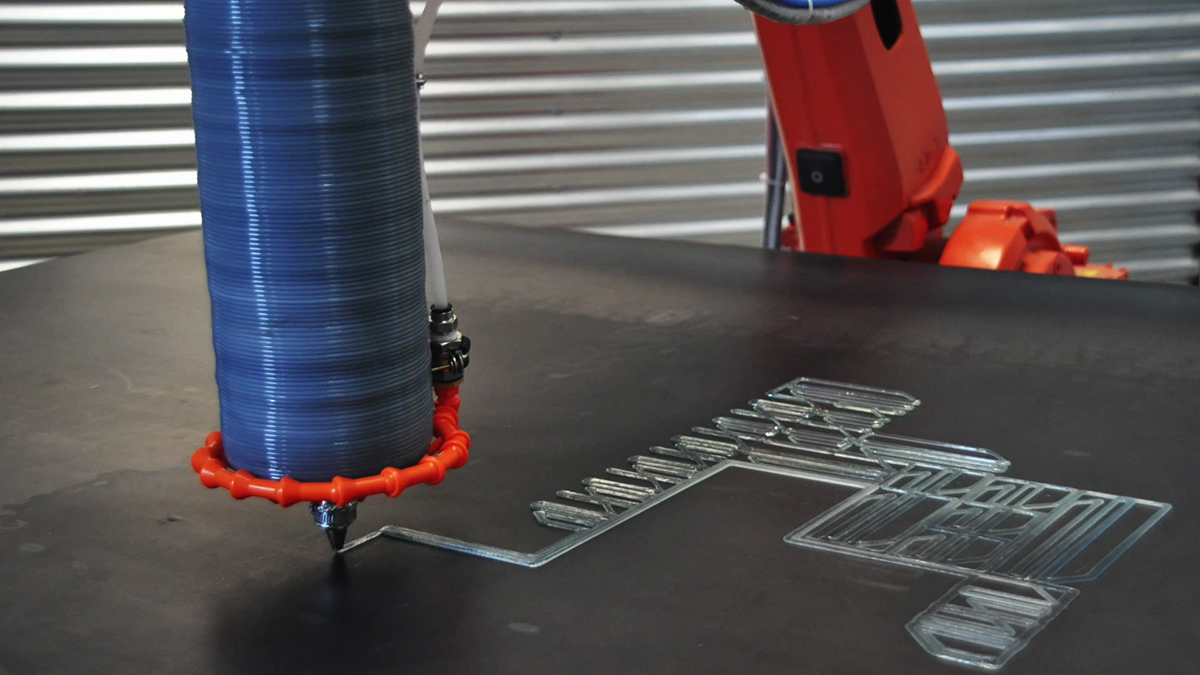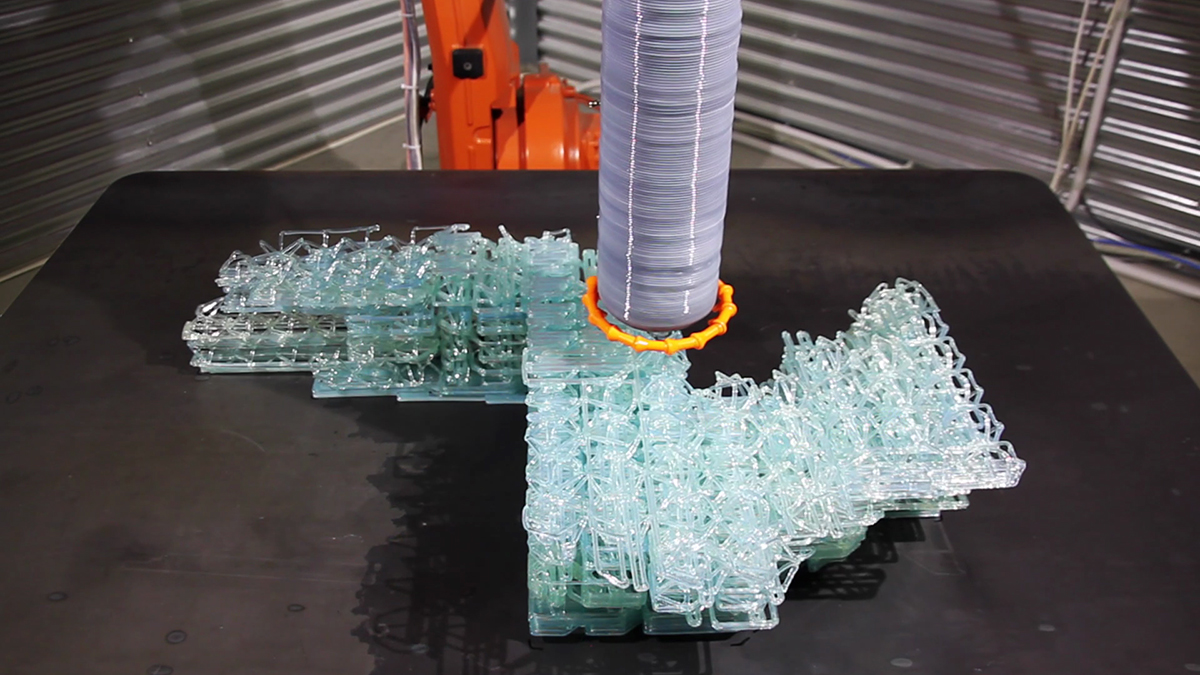Fancy ditching your regular office chair for a futuristic throne built by a robot? Of course you do. That’s why you should check out this amazing plastic creation, conjured up using the magic of 3D-printing software by a team of designers led by Gilles Retsin and Manuel Jiménez Garcia.
Unlike regular printing, which involves a layer-by-layer printing process, this chair was created by printing a continuous line of melted plastic, a bit like squirting molten glue out of a glue gun and using it to make a unique-looking object.
“The process we developed allows us to not print in layers like with normal 3D printing, but in three dimensions,” Gilles Retsin, co-director of the Design Computation Lab, told Digital Trends. “This is very difficult to control, because you have to prevent the nozzle hitting structures that are already printed. Our software allows exactly that. It’s the first software that allows users to design objects directly with the toolpaths themselves, and send this data directly to a robot. This makes large-scale robotic fabrication and 3D printing available for a large public. It goes from academic exercise to direct application.”
The chair itself is modeled after the famous S-shaped Panton chair, created by Danish designer Verner Panton. It’s called the Voxel chair, named after so-called “voxels” which act as pixels in three-dimensional space. It is made from transparent, biodegradable PLA plastic.
“This process is very cheap and fast, allowing for larger objects to be manufactured,” Retsin continued. “The ability to print in the air saves a lot of time in the printing process. you can go much faster and you have to use less material.”
While there are no plans to bring the chair to market any time soon, Retsin says that the software will be released some point this year.
“We think it’s very interesting not only for architects and designers, but specifically for engineers in automobile and aerospace,” Retsin said. “This basically allows them to really optimize and tailor large 3D-printed structures and therefore save lots of material. The software essentially offers something that no other software on the market does now. Some structure optimization softwares allow to chose a pattern for internal structures, but as a designer or engineer you can’t play around with it that much. This is a game changer and the first software that allows you to directly design and organize millions of toolpaths for 3D printing.”






